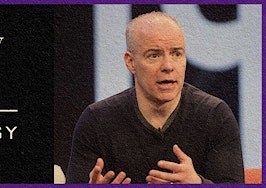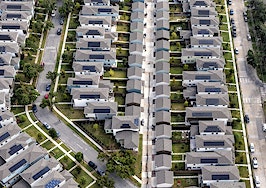While both closed and open sales plummeted in April, Realogy CEO Ryan Schneider believes the real estate industry may be past the peak decline. Schneider reported on a company earnings call Thursday morning that the company’s internal data shows mid-April may have been the peak.
Schneider reported that Realogy has seen an approximate 40 percent decline in open transactions — home sales that have started, but are yet to close — from the franchise side of the business and a 50 percent decline in open transactions from the owned-brokerage business.
“The decline in new open transaction volume appears to have reached peak decline in Mid-April,” Schneider said. “Since the mid-April peak, the decline in open transaction volume, while still significant, has lessened in the second half of April.”
The difference between the declines in brokerage and franchise business are mostly due to geographic differences in the concentration of the businesses, according to Schneider.
The overall closed volume in April was down 20 to 25 percent in April — with the owned brokerage down 25 percent and the franchise side of the business down 20 percent. New York City and California were both down roughly 30 percent, Florida volume was down around 20 percent and a few states like Texas, Minnesota and Georgia were only down in the low single-digits.
“This is actually better than I thought it would be when the crisis began,” Schneider said, before adding that he’s not claiming victory yet because it’s only a few weeks of trend data.
New listings of more than a million dollars were down, according to Schneider, which pushed overall prices down. The inventory that is out there is going quickly, though, according to Schneider.
On the consumer side, Schneider said that across brokerage websites home search is up and interest in suburban living appears to be climbing, which could drive pent-up demand. A shift to more dispersed living could drive a substantial number of home sale transactions, according to Schneider.
“We believe there’s going to be pent up inventory and demand post-COVID,” Schneider said. “All of this is subjected to what happens with the macro but those are consumers trends we’re seeing in this crisis.”














